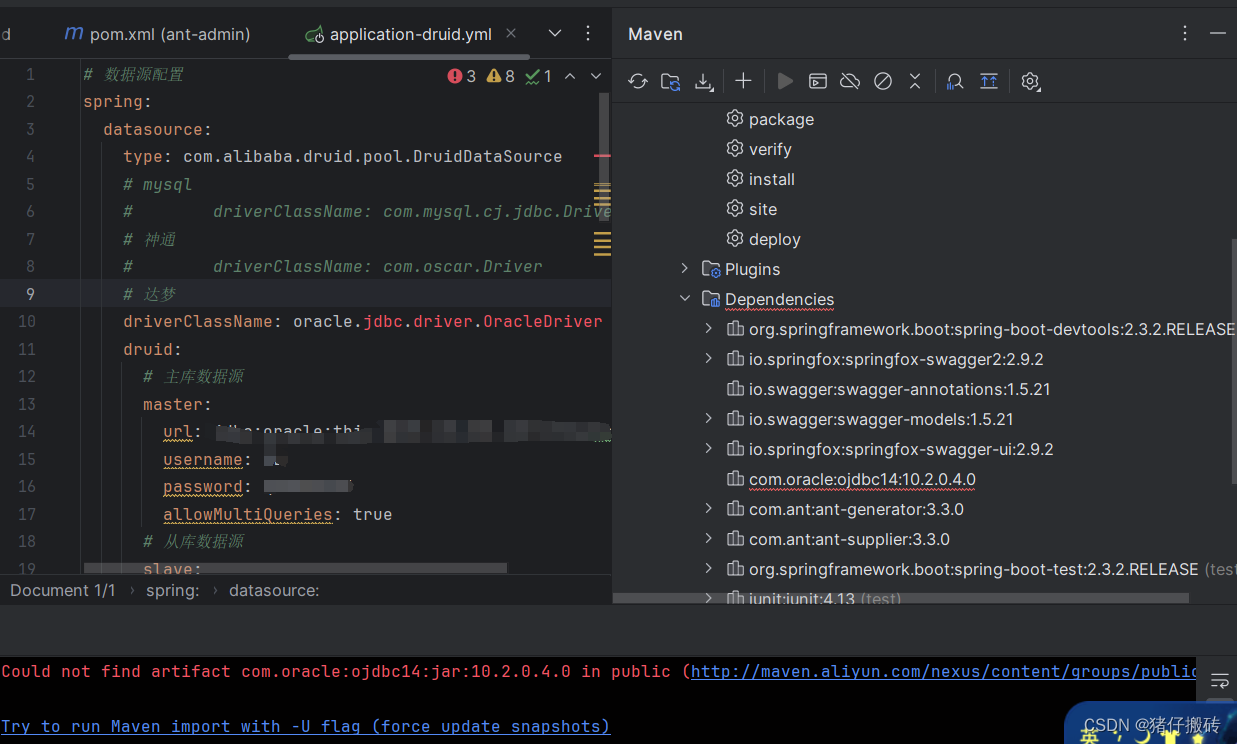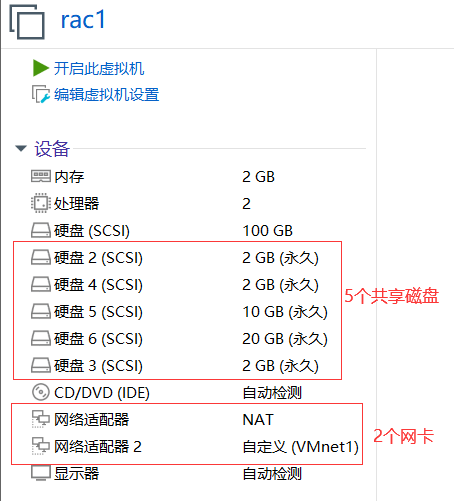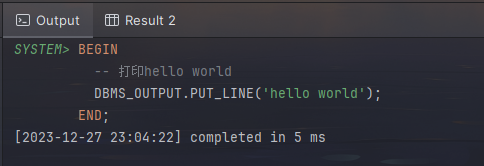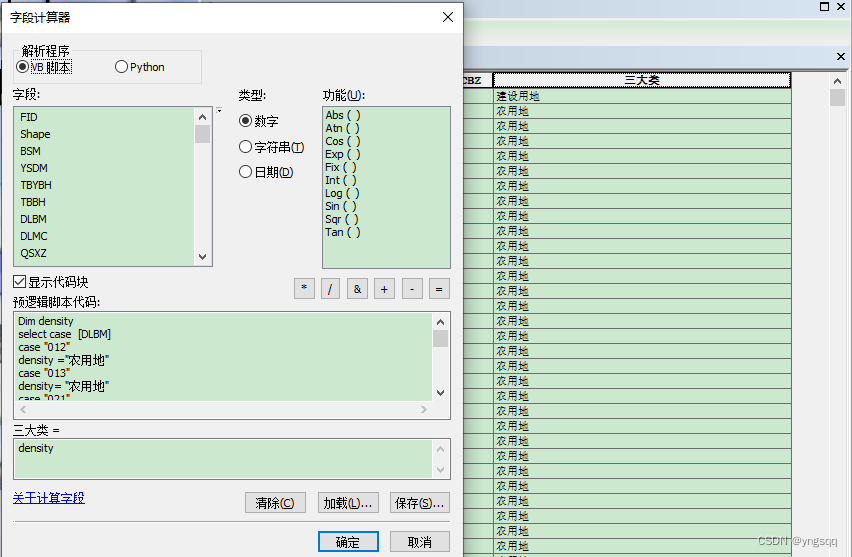一.入门部分
- 创建表空间
create tablespace schooltbs datafile ‘D:oracledatasourceschooltbs.dbf’ size 10M autoextend on; - 删除表空间
drop tablespace schooltbs[including contents and datafiles]; - 查询表空间基本信息
select *||tablespace_name from DBA_TABLESPACES; - 创建用户
create user lihua
identified by lihua
default tablespace schooltbs
temporary tablespace temp; - 更改用户
alter user lihua
identified by 123
default tablespace users; - 锁定用户
alter user lihua account lock|unlock; - 删除用户
drop user lihua cascade;–删除用户模式 - oracle数据库中的角色
connect,dba,select_catalog_role,delete_catalog_role,execute_catalog_role,exp_full_database,imp_full_database,resource - 授予连接服务器的角色
grant connect to lihua; - 授予使用表空间的角色
grant resource to lihua with grant option;–该用户也有授权的权限 - 授予操作表的权限
grant select,insert on user_tbl to scott;–当前用户
grant delete,update on lihua.user_tbl to scott;–系统管理员
1.SQl支持的命令:
数据定义语言(DDL):create,alter,drop
数据操纵语言(DML):insert,delete,update,select
数据控制语言(DCL):grant,revoke
事务控制语言(TCL):commit,savepoint,rollback
2.Oracle数据类型
字符,数值,日期,RAW,LOB
字符型
char:1-2000字节的定长字符
varchar2:1-4000字节的变长字符
long:2GB的变长字符
注意:一个表中最多可有一列为long型
数值型
number:最高精度38位
日期时间型
date:精确到ss
timestamp:秒值精确到小数点后6位
函数
sysdate,systimestamp返回系统当前日期,时间和时区。
更改时间的显示
alter session set nls_date_language=’american’;
alter session set nls_date_format=’yyyy–mm-dd’;
伪列可以查询,但不能插入、更新和修改它们的值
常用的伪列:rowid和rownum
rowid:表中行的存储地址,可唯一标示数据库中的某一行,可以使用该列快速定位表中的行。
rownum:查询返回结果集中的行的序号,可以使用它来限制查询返回的行数。
用于操作表的命令
create table
alter table
truncate table
drop table
修改表的命令
alter table stu_table rename to stu_tbl;–修改表名
alter table stu_tbl rename column stu_sex to sex;–修改列名
alter table stu_tbl add (stu_age number);–添加新列
alter table stu_tbl drop(sex);–删除列
alter table stu_tbl modify(stu_sex varchar2(2));–更改列的数据类型
alter table stu_tbl add constraint pk_stu_tbl primary key(id);–添加约束
4.数据操纵语言
select,update,delete,insert
利用现有的表创建表
create table stu_tbl_log as select id,stu_name,stu_age from stu_tbl;–
选择无重复的行
select distinct stu_name from stu_tbl;–
插入来自其他表中的记录
insert into stu_tbl_log select id,stu_name,stu_age from stu_tbl;
5.数据控制语言
grant,revoke
6.事务控制语言
commit,savepoint,rollback
7.SQL操作符
算术操作符:L+-*/
比较操作符:L=,!=,<>,>,<,>=,<=,between-and,in,like,is null等
逻辑操作符:Land,or,not
集合操作符:Lunion,union all,intersect,minus
连接操作符:L||
示例中stu_tbl_log中的数据如下:
ID STU_NAME STU_AGE
———- ——————– ———-
1000 李华 20
1003 nimda 3
stu_tbl中的数据如下:
ID STU_NAME ST STU_AGE
———- ——————– — ———-
1000 李华 男 20
1002 admin 男 30
示例:
select (3+2)/2 from dual;–算术操作符,结果:2.5
select * from stu_tbl where stu_age>=20;–比较操作符
select * from stu_tbl where stu_name like ‘%a%’;–比较操作符:like
select * from stu_tbl where stu_name like ‘a___’;–比较操作符:like
select * from stu_tbl where stu_age in(20,30);–比较操作符:in
select * from stu_tbl where stu_age between 20 and 30;–比较操作符:between
select stu_name from stu_tbl union all
select stu_name from stu_tbl_log;–集合操作符:union all,测试结果具体如下:
STU_NAME
———–
李华
accp
李华
accp
nimda
已选择6行。
select stu_name from stu_tbl union
select stu_name from stu_tbl_log;–集合操作符:union,测试结果具体如下:
STU_NAME
———
accp
nimda
李华
select stu_name from stu_tbl intersect
select stu_name from stu_tbl_log;–集合操作符:intersect,测试结具体如下:
STU_NAME
———-
accp
李华
select stu_name from stu_tbl minus
select stu_name from stu_tbl_log;–集合操作符:minus,测试结果如下:
STU_NAME
———-
Admin
从中可以看出:
minus是获取第一张表独有的数据
intersect是获取两张表中都有的数据
union是整合两张表的数据,都有的只显示一次
union all是纯粹的两张表数据整合
select id,stu_name||’ ‘||stu_sex as name_sex,stu_age
from stu_tbl;–连接操作符||,测试结果具体如下:
ID NAME_SEX STU_AGE
———- ———————– ———-
1000 李华 男 20
1001 accp 男 20
1002 admin 男 30
8.SQL函数
单行函数:从表中查询的每一行只返回一个值,可出现在select子句,where子句中
日期函数
数字函数
字符函数
转换函数:ToChar(),ToDate(),ToNumber()
其他函数:
Nvl(exp1,exp2):表达式一为null时,返回表达式二
Nvl2(exp1,exp2,exp3):表达式一为null时返回表达式三,否则返回表达式二
Nullif(exp1,exp2):两表达式相等时,返回null,否则返回表达式一
分组函数:基于一组行来返回
Row_number,rank,dense_rank
示例:
select u.user_name,sum(oi.order_num*oi.order_price) as total,row_number() over (order by sum(oi.order_num*oi.order_price) desc) as sort from order_item_tbl
oi,user_tbl u,order_tbl o where oi.order_id = o.id and o.user_id = u.id group by u.user_name;
1.锁:数据库用来控制共享资源并发访问的机制。
锁的类型:行级锁,表级锁
行级锁:对正在被修改的行进行锁定。行级锁也被称之为排他锁。
在使用下列语句时,Oracle会自动应用行级锁:
insert,update,delete,select…… for update
select……for update允许用户一次锁定多条记录进行更新。
使用commit or rollback释放锁。
表级锁:
lock table user_tbl in mode mode;
表级锁类型:
行共享 row share
行排他 row exclusive
共享 share
共享行排他 share row exclusive
排他 exclusive
死锁:两个或两个以上的事务相互等待对方释放资源,从而形成死锁
2.数据库对象
oracle数据库对象又称模式对象
数据库对象是逻辑结构的集合,最基本的数据库对象是表
数据库对象:
序列
用于生成唯一,连续序号的对象。
创建语法:
create sequence user_id_seq
start with 1000
increment by 1
maxvalue 2000
minvalue 1000
nocycle
cache 1000;–指定内存中预先分配的序号
访问序列:
select user_id_seq.currval from dual;
select user_id-seq.nextval from dual;
更改删除序列:
alter sequence user_id_seq maxvalue 10000;–不能修改其start with 值
drop sequence user_id_seq;
在Hibernate中访问序列:
<param name=”sequence”>
user_id_seq
</param>
</generator>
视图
以经过定制的方式显示来自一个或多个表的数据
创建视图:
create or replace view
user_tbl_view (vid,vname,vage)
as select id,user_name,age from user_tbl
[with check option]|[with read only];
创建带有错误的视图:
create force view user_tbl_force_view as
select * from user_table;–此时user_table可以不存在
创建外联接视图:
create view user_stu_view as
select u.id,u.user_name,u.password,s.ddress
from user_tbl u,stu_tbl s
where u.s_id(+)=s.id;–哪一方带有(+),哪一方就是次要的
删除视图:
drop user_stu_view;
索引
用于提高SQL语句执行的性能
索引类型:
唯一索引,位图索引,组合索引,基于函数的索引,反向键索引
创建标准索引:
create index user_id_index on user_tbl(id) tablespace schooltbs;
重建索引:
alter index user_id_index rebuild;
删除索引:
drop index user_id_index;
创建唯一索引:
create unique index user_id_index on user_tbl(id);
创建组合索引:
create index name_pass_index on user_tbl(user_name,password);
创建反向键索引:
create index user_id_index on user_tbl(id) reverse;
四.使用PL/SQL
可用于创建存储过程,触发器,程序包,给SQL语句的执行添加程序逻辑。
支持SQL,在PL/SQL中可以使用:
数据操纵命令
事务控制命令
游标控制
SQL函数和SQL运算符
可移植性
分为三个部分:声明部分,可执行部分和异常处理部分
[declare
declarations]
begin
executable statements
[exception
handlers]
end;
declare
select score into score from user_tbl where id=’&id’;
if score>90 then
elsif score>80 then
elsif score>60 then
end if;
end;
–根据学员姓名获取某学员的成绩–if
declare
select score into score from user_tbl where user_name=’&name’;
if score>90 then
elsif score>80 then
elsif score>60 then
end if;
end;
—case的使用
declare
select grade into grade from user_tbl where id=’&id’;
case grade
when ‘A’ then dbms_output.put_line(‘优异’);
when ‘B’ then dbms_output.put_line(‘优秀’);
when ‘C’ then dbms_output.put_line(‘良好’);
else dbms_output.put_line(‘一般’);
end case;
end;
declare
i number(4):=1;
dbms_output.put_line(‘loop size:’||i);
i:=i+1;
exit when i>10;
end loop;
end;
–while循环
declare
i number(4):=1;
while i<=10 loop
dbms_output.put_line(‘while loop size=’||i);
i:=i+1;
end loop;
end;
–for循环
declare
i number(4):=1;
for i in 1..10 loop
dbms_output.put_line(‘for loop Size:’||i);
end loop;
end;
declare
i number(2):=1;
j number(2):=1;
for j in 1..i loop
dbms_output.put(j||’x’||i||’=’||j*i||’ ‘);
end loop;
dbms_output.put_line(”);
end loop;
end;
—动态SQL
declare
userId number(2);
userName user_tbl.user_name%type;
execute immediate ‘create table testExe(id number,test_name varchar2(20))’;
userId:=’&userId’;
sql_str:=’select user_name from user_tbl where id=:id’;
execute immediate sql_str into userName using userId;
dbms_output.put_line(userName);
end;
(or
declare
id_param number:=’&id_param‘;
name_param stu_tbl.stu_name%type;
begin
sql_str:=’select stu_name from stu_tbl where id=:p’;
execute immediate sql_str into name_param using id_param;
dbms_output.put_line(name_param);
end;
/
)
declare
grade number(4);
begin
grade:=’&grade’;
case grade
when 1 then dbms_output.put_line(‘好的’);
—else dbms_output.put_line(‘不好’);
end case;
dbms_output.put_line(‘输入类型不匹配!’);
end;
–系统异常
declare
begin
select * into rowD from user_tbl;
dbms_output.put_line(rowD.id||”||rowD.user_name||’ ‘||rowD.password);
dbms_output.put_line(‘不能将多行赋予一个属性!’);
end;
or
declare
rowD user_tbl%rowtype;
begin
select * into rowD from user_tbl where id=5;
dbms_output.put_line(rowD.id||’ ‘||rowD.user_name||’ ‘||rowD.password);
dbms_output.put_line(‘不能将多行赋予一个属性!’);
dbms_output.put_line(‘没有您要查找的数据!’);
end;
declare
begin
if category not in(‘附件‘,’顶盘’,’备件’) then
else
dbms_output.put_line(‘您输入的类别是:’||category);
end if;
when invalidError then
dbms_output.put_line(‘无法识别的类别!’);
end;
declare
grade user_tbl.grade%type;
begin
select grade into grade from user_tbl where id=&id;
if grade=’A’ then
else
dbms_output.put_line(‘查询的等级为:’||grade);
end if;
raise_application_error(-20001,’未知的等级!’);
end;
游标类型:隐式游标,显式游标,REF游标
==========隐式游标==========
在PL/SQL中使用DML语句时自动创建隐式游标
隐式游标自动声明、打开和关闭,其名为SQL
隐式游标的属性:
%found SQL语句影响实质后返回true
%notfound SQL语句没有影响实质后返回true
%rowcount SQL语句影响的行数
%isopen 游标是否打开,始终为false
示例:
begin
update user_tbl set score=score+5;
if SQL%found then
dbms_output.put_line(‘数据被更改: ‘||SQL%rowcount);
elsif sql%notfound then
dbms_output.put_line(‘没有找到数据!’);
end if;
if SQL%isopen then
dbms_output.put_line(‘Open’);
else
dbms_output.put_line(‘Close’);
end if;
end;
==========显式游标==========
给游标命名
将一个查询与游标关联
cursor cursor_name is select statement;
打开游标:
open cursor_name;
取数据:
fetch cursor_name into record_list;
关闭游标:
显式游标的属性:
%found 执行最后一条fetch语句成功返回行时为true
%notfound 执行最后一条fetch语句未能返回行时为true
示例:
declare
users user_tbl%rowtype;
cursor boys_cur is select * from user_tbl where sex=’h’;
begin
open boys_cur;
loop
exit when boys_cur%notfound;
dbms_output.put_line(users.user_name||’ ‘||users.password);
dbms_output.put_line(boys_cur%rowcount);
end loop;
end;
带参的显式游标
declare
users user_tbl%rowtype;
cursor boys_cur(sexParam varchar2)
is select * from user_tbl where sex=sexParam;
begin
open boys_cur(‘&sex’);
loop
fetch boys_cur into users;
exit when boys_cur%notfound;
dbms_output.put_line(users.user_name||’ ‘||users.password);
dbms_output.put_line(boys_cur%rowcount);
end loop;
close boys_cur;
end;
使用显式游标更新行
declare
cursor user_update_cur is select sex from user_tbl for update;
usersex user_tbl.sex%type;
begin
open user_update_cur;
loop
fetch user_update_cur into usersex;
exit when user_update_cur%notfound;
dbms_output.put_line(usersex);
if usersex = ‘M’ then
update user_tbl set score=score-5 where current of user_update_cur;
else
update user_tbl set score=score+5 where current of user_update_cur;
end if;
end loop;
end;
循环游标
declare
cursor user_cur is select * from user_tbl;
begin
for username in user_cur loop
dbms_output.put_line(username.user_name||’ ‘||username.sex);
end loop;
end;
==========REF游标==========
声明类型的语法
Type ref_cursor_name is ref cursor [return return_type];
打开游标变量的语法
Open cursor_name for select_statement;
—-声明强类型的游标
declare
type ref_cur is ref cursor return user_tbl%rowtype;
users_cur ref_cur;
—-声明弱类型的游标
declare
type ref_cur is ref cursor;
users_cur ref_cur;
—-强类型
declare
type ref_cur is ref cursor return user_tbl%rowtype;
users_cur ref_cur;
users user_tbl%rowtype;
begin
open users_cur for select * from user_tbl where user_name=’ny2t92′;
loop
fetch users_cur into users;
exit when users_cur%notfound;
dbms_output.put_line(users.user_Name);
end loop;
close users_cur;
end;
—-弱类型
declare
type ref_cur is ref cursor;
my_cur ref_cur;
users user_tbl%rowtype;
stus stu_tbl%rowtype;
begin
open my_cur for select * from user_tbl;
loop
fetch my_cur into users;
exit when my_cur%notfound;
dbms_output.put_line(users.user_Name);
end loop;
close my_cur;
open my_cur for select * from user_tbl where user_name=’ny2t92′;
loop
fetch my_cur into users;
exit when my_cur%notfound;
dbms_output.put_line(users.user_Name);
end loop;
close my_cur;
open my_cur for select * from stu_tbl;
loop
fetch my_cur into stus;
exit when my_cur%notfound;
dbms_output.put_line(stus.stu_Name);
end loop;
close my_cur;
end;
—-动态SQL游标
declare
type ref_cur is ref cursor;
my_cur ref_cur;
users user_tbl%rowtype;
sqlstmt varchar2(200);
begin
sqlstmt := ‘select * from user_tbl where user_name= :name’;
open my_cur for sqlstmt using username;
loop
fetch my_cur into users;
exit when my_cur%notfound;
dbms_output.put_line(users.user_Name);
end loop;
close my_cur;
end;
六.子程序
子程序分为:存储过程和函数,它是命名的PL/SQL块,编译并存储在数据库中。
过程—-执行某些操作
函数—-执行操作并返回值
is|as
begin
executable statements
exception
end proce_name;
Out—-用于向调用程序返回值
In out—-用于接收调用程序的值,并向调用程序返回更新的值
Execute proce_name(parameter_list);
或
Declare
Variable var_list;
Begin
End;
Grant execute on proce_name to scott;
Grant execute on proce_name to public;
删除存储过程:
==========函数==========
创建函数的语法:
Return datatype is|as
Local declarations
Begin
Executable statements;
Return result;
Exception
Exce_handlers;
End;
函数只能接收in参数,不能接受out或in out参数,形参不能是PL/SQL类型
函数的返回类型也必须是数据库类型
访问函数的方式:
- 使用PL/SQL块
- 使用SQL语句
Select fun_name(parameter_list) from dual;
原文地址:https://blog.csdn.net/softshow1026/article/details/134589813
本文来自互联网用户投稿,该文观点仅代表作者本人,不代表本站立场。本站仅提供信息存储空间服务,不拥有所有权,不承担相关法律责任。
如若转载,请注明出处:http://www.7code.cn/show_9597.html
如若内容造成侵权/违法违规/事实不符,请联系代码007邮箱:suwngjj01@126.com进行投诉反馈,一经查实,立即删除!





